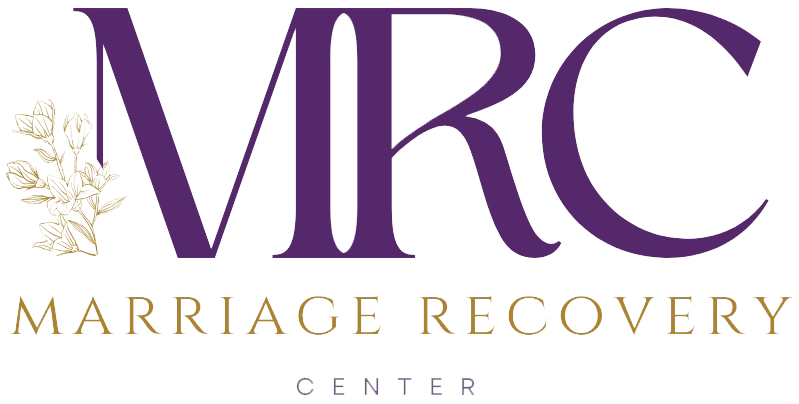Broken agreements lead to broken marriages. The damage occurs when one or both spouses break promises they made with each other and don’t have accountability embedded in their relationship. And when there are no consequences, when neither of them takes responsibility for these violations, there’s no way forward to mending the relationship. Dr. Hawkins talks about the importance of sacred agreements, what to do when these are broken, and how you can build a path to restoration.
How to Fix and Save a Broken Marriage
Marriage is a complex journey that often requires effort and commitment from both partners. Unfortunately, many marriages face challenges that can lead to brokenness and turmoil. However, the good news is that there are ways to repair and save a broken marriage. In this article, we will explore an effective approach to fixing marital problems and restoring the relationship to a healthy and fulfilling state.
The Illusion of Clear Boundaries
So many people think they have clear boundaries in their marriage, only to realize that they don’t. Boundaries are essential for establishing a sense of safety, respect, and personal space within the relationship. However, it is crucial to reassess and redefine boundaries periodically to ensure they align with the needs and expectations of both partners.
Accountability: The Missing Link
Couples often believe that accountability is naturally woven into their relationship, when in reality, it may be lacking. Accountability is about taking responsibility for one’s actions, acknowledging the impact they have on the relationship, and making efforts to address and rectify any harm caused. Without accountability, unresolved issues can accumulate and erode the foundation of a marriage.
The V Tool: Effective Communication and Empathy
Effective communication is crucial for repairing a broken marriage. Dr. David Hawkins, director of the Marriage Recovery Center, introduces a powerful tool called the V. The V represents the roles of the speaker and the listener, who hold space for each other while discussing problems. This tool goes beyond mere conversation and emphasizes the importance of empathizing with each other’s perspectives.
Moving Beyond Empathy: Sacred Agreements
While empathy is an essential step, it is not enough to save a broken marriage. The next crucial element is creating sacred agreements. These agreements involve both partners acknowledging their roles in the issues and committing to do things differently. A sacred agreement is a powerful commitment that sets the foundation for rebuilding trust and improving the relationship.
Consequences and Teeth in Agreements
For sacred agreements to be effective, they must have teeth, meaning they need to carry consequences if violated. Couples must consider the consequences of breaking their agreements and establish clear repercussions for doing so. This accountability ensures that both partners take their commitments seriously and work diligently to avoid repeating harmful behaviors.
Break in Fellowship: A Lasting Impact
In cases where a sacred agreement is broken, it is essential to address the consequences directly. Dr. Hawkins suggests implementing a “break in fellowship” to emphasize the severity of the violation. Breaking fellowship means temporarily distancing oneself from the partner and suspending the relationship until certain conditions are met.
The Three A’s: Restoring the Relationship
The path to restoration involves the three A’s: sincere apology, acceptance of responsibility, and making appropriate amends. A sincere apology acknowledges the hurt caused, while accepting responsibility demonstrates an understanding of the consequences of one’s actions. Making appropriate amends requires understanding the partner’s needs and preferences for restoration.
Escalating Consequences for Continuous Violations
If violations of sacred agreements persist, the consequences for breaking fellowship and making amends must escalate. This escalation helps to reinforce the importance of honoring commitments and ensures that the relationship’s restoration is prioritized. Continuous violations should be brought to counseling to explore underlying issues and seek professional guidance.
Clear Agreements with Break in Fellowship
In fixing a broken marriage, clear agreements that both partners accept and understand are crucial. These agreements provide a framework for establishing healthy boundaries, fostering accountability, and promoting open communication. The break in fellowship serves as a critical and intense process to address violations and pave the way for restoration.
Conclusion
Fixing and saving a broken marriage requires intentional effort, accountability, and effective communication. By implementing clear boundaries, establishing sacred agreements with consequences, and embracing the three A’s (apology, responsibility, and amends), couples can repair their relationship and restore trust. Remember, seeking professional help through counseling can provide invaluable guidance and support on this journey to rebuilding a strong and fulfilling marriage.
To learn how we can help, reach out to us at (206) 219-0145 or info@marriagerecoverycenter.com to speak with a Client Care Specialist
Also read: What To Do When He Says, I Don’t Love You Anymore
About Dr. Hawkins:
The internet is inundated with hyperbole and misinformation about narcissism, leaving many people confused and hopeless. Get the facts on narcissism and emotional abuse from someone who has been researching, writing about and treating narcissism and emotional abuse for over a decade.
Dr. Hawkins is a best-selling author and clinical psychologist with over three decades of experience helping people break unhealthy patterns and build healthier relationships.
He is the founder and director of the Marriage Recovery Center and the Emotional Abuse Institute which offers education, training and counseling for people who want to break free of, and heal from, emotional abuse. Whether the perpetrator of the abuse is your spouse, partner, parent, boss, friend or family member, we offer practical advice for anyone trapped in a toxic, destructive relationship.
In addition to narcissism & emotional abuse, you’ll learn about the lesser known forms of abuse, including covert abuse, reactive abuse, spiritual abuse, secondary abuse, relationship trauma and much more.








